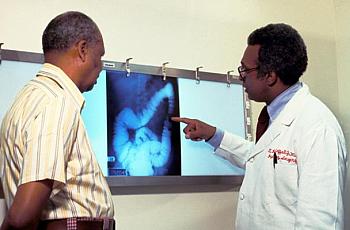
William Heisel
Contributing Editor

Contributing Editor
I have reported on health for most of my career. My work as an investigative reporter at the Los Angeles Times and the Orange County Register exposed problems with the fertility industry, the trade in human body parts and the use of illegal drugs in sports. I helped create a first-of-its-kind report card judging hospitals on a wide array of measures for a story that was a finalist for the Pulitzer Prize. I was one of the lead reporters on a series of stories about lead in candy, a series that also was a finalist for the Pulitzer.For the Center for Health Journalism (previously known as Reporting on Health), I have written about investigative health reporting and occasionally broke news on my column, Antidote. I also was the project editor on the Just One Breath collaborative reporting series. These days, for the University of Washington, I now work as the Executive Director for Insitutue for Health Metrics and Evaluation's Client Services, a social enterprise. You can follow me on Twitter @wheisel.

Over a series of posts, I’m going to try to break down some of the broad categories of data, discuss how they are used and point out some of their limitations. I’m going to cover four main areas: vital statistics, censuses, surveys, and estimates.

It's not enough to produce a great reporting project. You've got to keep higher-ups excited about it. Here are some tips.

Journalist Rebecca Plevin faced many challenges reporting on the high rates – and costs – of valley fever in California prisons. Here's what you can learn from her work.

Learn the latest tips for covering cancer — including important difference in types of screening — from an international journalism conference.

Get tips for smart coverage of cancer from an international journalism conference.

To keep your reporting projects on track, think more like a taxi driver and less like a pastry chef.

Get tips on covering nonprofit hospitals from the editor who oversaw the "Prognosis: Profits" investigative series in North Carolina.

The Prognosis: Profits series examined how North Carolina’s nonprofit hospitals are for-profit in practice, driving up health care costs and wrecking their patients’ finances. Here's how the series was reported.

We don’t write enough about what happens when someone is given the wrong diagnosis. Here's what you should know.

Keep your interviews short, shut up and cover the essentials: here are more tips from a veteran journalist on how to manage a big reporting project.